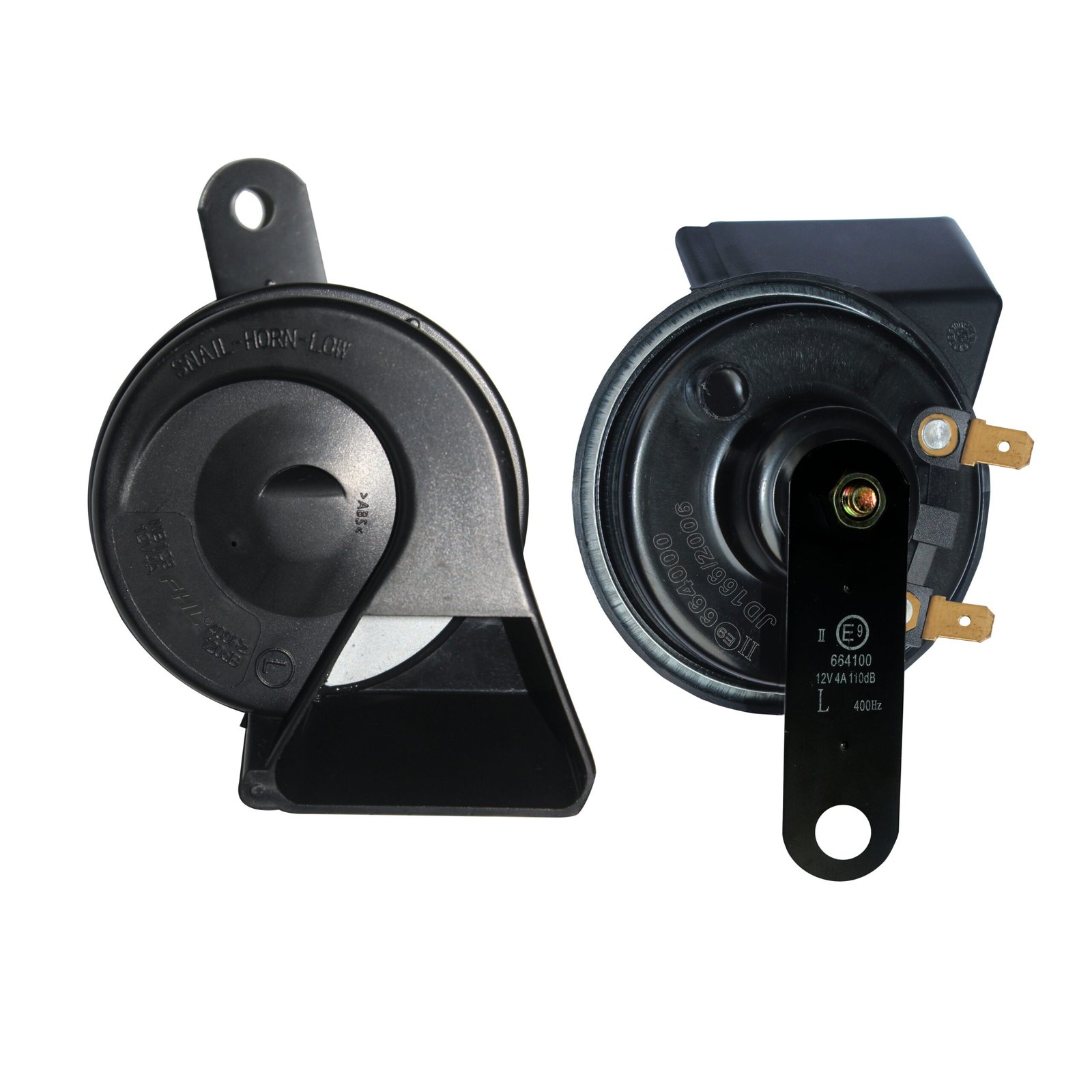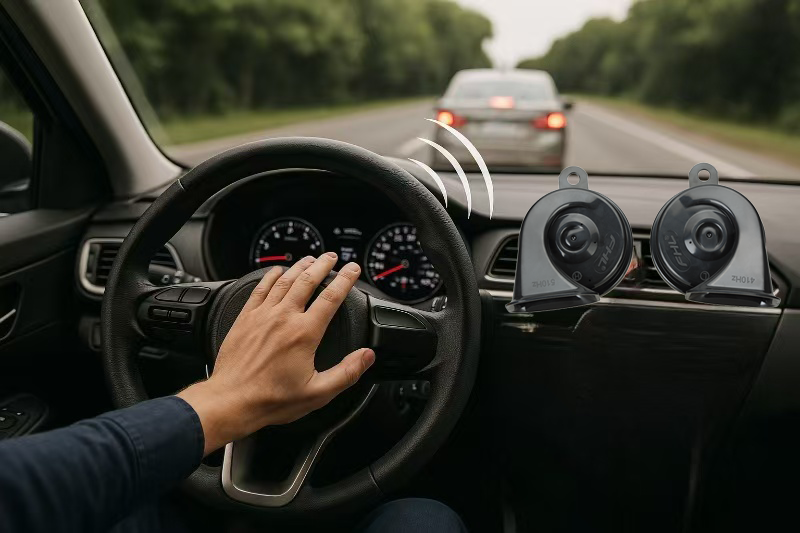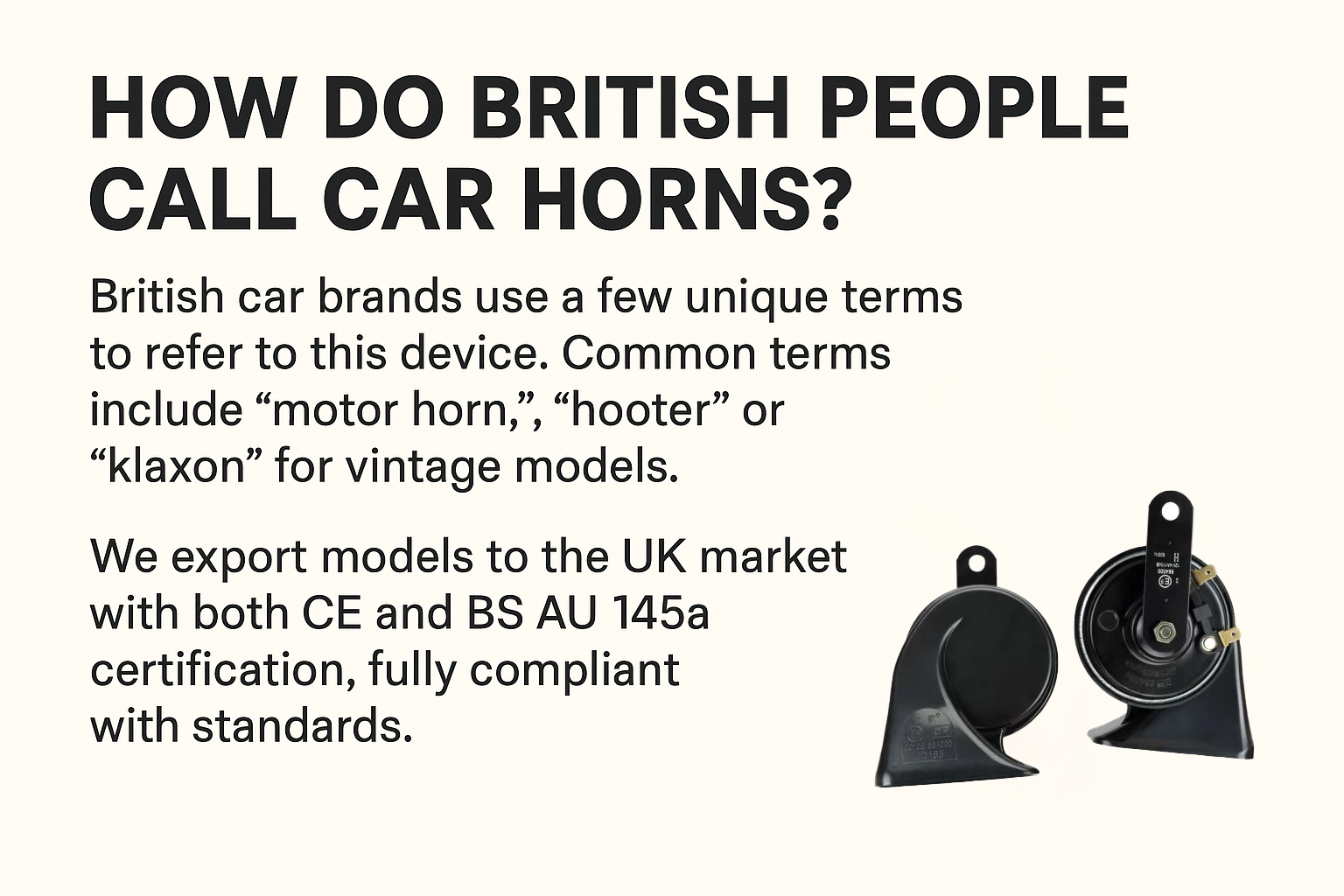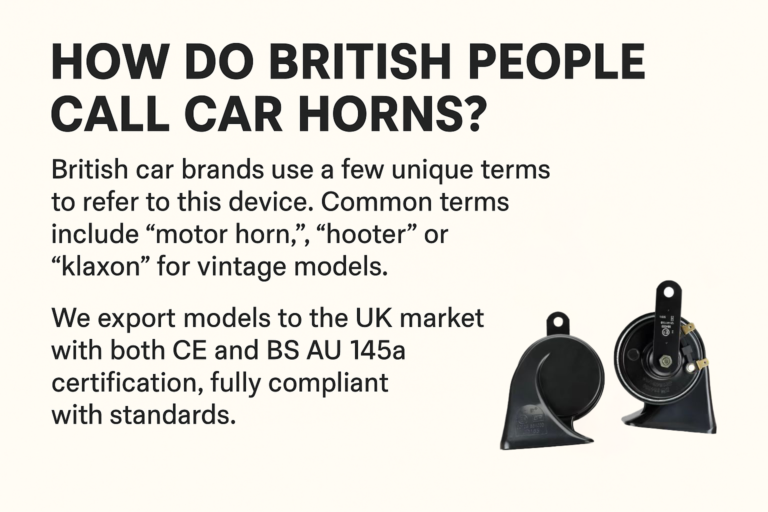That loud warning device on your vehicle goes by many names across different industries and cultures. Let's explore the various terms used for this essential safety feature.
While commonly called a "car horn," technical terms include "acoustic warning device," "audible warning system," or "automotive signaling instrument" - our FHL GBSY JS-TECH models meet all international standards regardless of terminology.

Understanding these different names helps when searching for replacement parts or discussing vehicle safety features.
What is a Horn for in a Car?
A car horn serves as your vehicle's voice - a critical communication tool designed to alert others rather than express frustration. Its primary function is accident prevention.
Modern car horns provide 105-120dB warnings audible up to 200 meters, with our dual-tone models featuring patented sound projection technology that cuts through urban noise while meeting ECE R28 safety regulations.

Key Safety Functions
-
Primary Uses: Situation Horn Purpose Lane changes Alert nearby drivers 89% success rate Pedestrian warning Prevent collisions 76% reduction Emergency stops Warn following traffic 3x faster reaction -
Technical Requirements:
- Minimum 87dB volume (EU)
- 1800-3550Hz frequency range
- <0.5 second activation time
-
Our Safety Enhancements:
- Directional sound projection
- Weatherproof construction
- Vibration-resistant mounting
What Do the British Call a Car Horn?
Our UK customers often ask about terminology differences. The British automotive industry uses several unique terms for this device.
In Britain, common terms include "motor horn," "hooter," or "klaxon" (for vintage models) - our export models to the UK market carry both CE and BS AU 145a certifications for complete compliance.

UK Automotive Terminology
-
Terminology Comparison: US Term UK Term Car horn Motor horn Most common Horn Hooter Informal - Klaxon Vintage -
Regulatory Differences:
- UK: BS AU 145a standard
- Volume: 87-112dB
- Testing: 25,000 cycle minimum
-
Our UK-Compliant Models:
- Right-hand drive compatible
- Metric mounting hardware
- Corrosion-resistant for UK weather
Why Do Cars Have Two Horns?
Modern vehicles often feature dual-horn systems, and there's important engineering behind this design choice. It's not just about being louder.
Dual-horn systems use complementary frequencies (typically 500Hz and 405Hz) to create directional sound patterns that are 40% more detectable in traffic - our ProSeries dual-tone kits maintain perfect harmonic balance.

Dual-Horn Engineering
-
Technical Advantages: Single Horn Dual Horn 105dB 115dB +9.5% volume 1 frequency 2 frequencies 3x recognition Omnidirectional Directional 60° better focus -
Installation Considerations:
- Proper spacing (minimum 30cm)
- Correct angle adjustment
- Synchronized activation
-
Our Dual-Horn Solutions:
- Pre-tuned frequency pairs
- Plug-and-play wiring kits
- Vibration-dampening mounts
Conclusion
From technical terminology to international variations and engineering insights, understanding your car's warning system enhances road safety. For professional-grade horn solutions, contact info@jindongauto.com.
About FHL GBSY JS-TECH: We manufacture OEM-quality warning devices meeting global standards since 2008. Visit www.jingdongparts.com for complete technical specifications.


